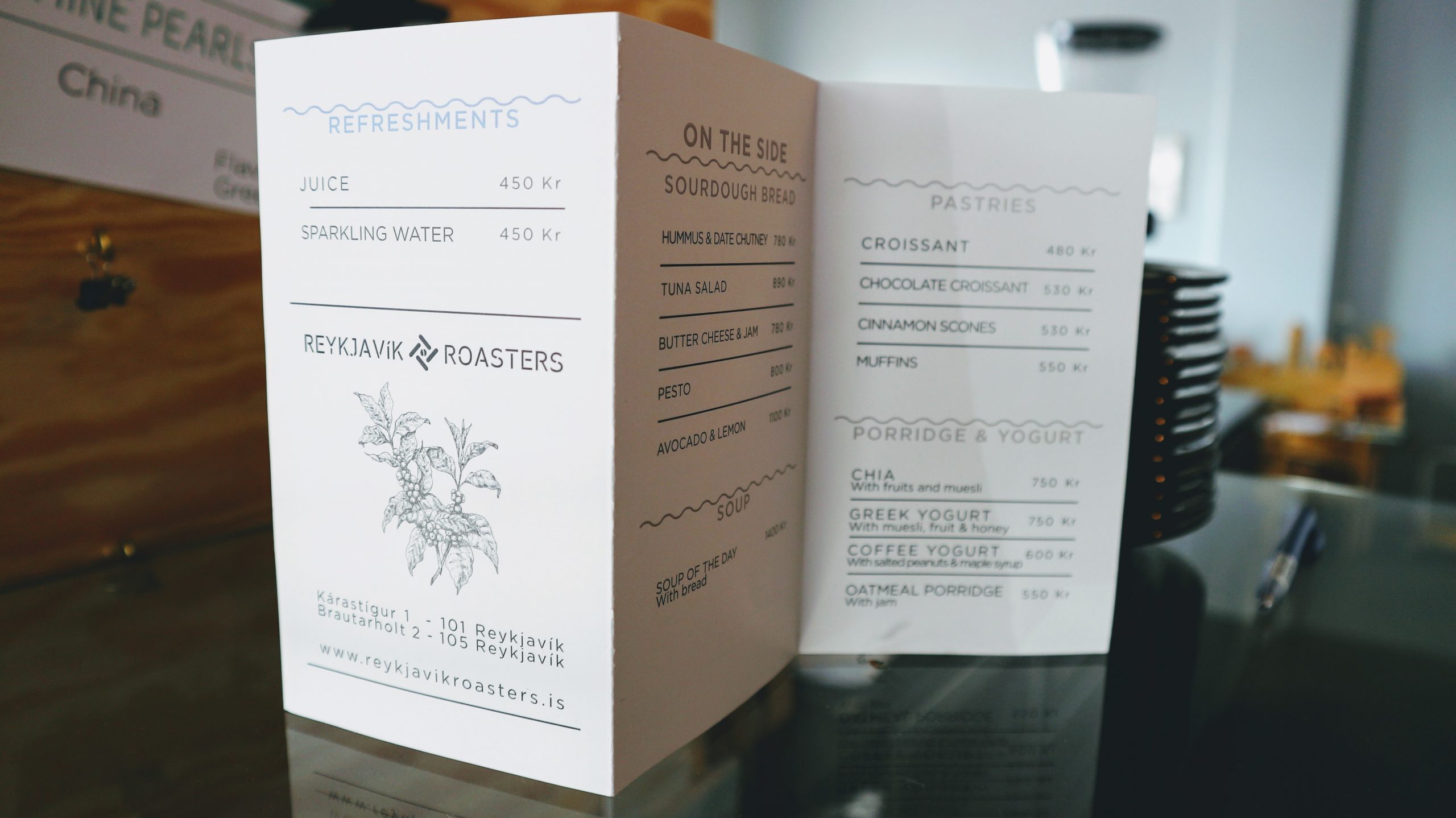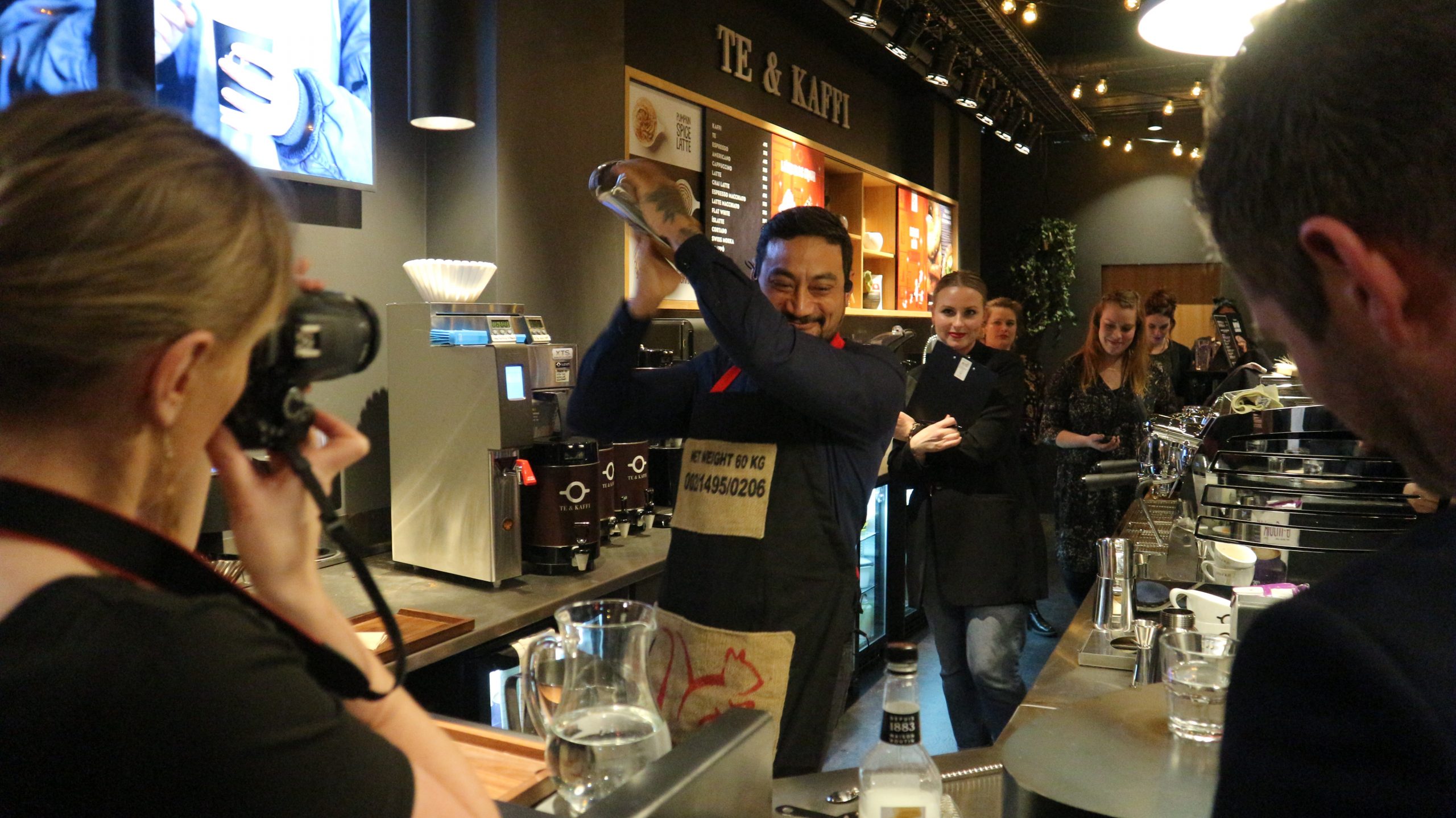A Day in Berlin
Berlin, 3.5 million inhabitants, 13 neighborhoods and more than 55 specialty coffee shops. What more do you need to continue reading?
Lee este articulo en español aquí http://www.essenceofcoffee.net/las-mejores-cafeterias-especialidad-berlin
Berlin, where the movement of the Third Wave of coffee has been spread from neighbourhood to neighbourhood, spreading into a network with more than 55 specialty coffee shops throughout the city.
Mariëlla Giljam's publications about Berlin on her blog “The Exploring Barista”, meeting Andreas Piel, who worked at “Kaffeekirsche Roastery”, in Reykjavik and Nora Šmahelová, co-owner of “Chapter One Coffee Berlin”, aroused my curiosity to visit Berlin, where the movement of the Third wave of coffee has been spread from neighborhood to neighborhood, spreading into a network with more than 55 specialty coffee shops throughout the city. Where you can enjoy the best grains on the market, prepared by passionate baristas, who came to this wonderful city from all corners of the world, and serve in spaces designed to raise your experience to another level by having a cup of coffee in your hands.
For those born after the cold war, Berlin is just a city in Germany. But for me and for many of my generation, Berlin is much more than a city. It is an Icon. We suffered with each Berliner, who jumped behind the wall, we dreamed of its demolition and we cried in hope, when finally Germany reunited and the "Iron Curtain" fell.
The plane landed at Tegel airport on December 6 at 10:30 PM. It was already night and therefore it was difficult for me to orientate myself. Since I only had one day in Berlin, the challenge was even greater, because in just a few hours, I had to learn to move around in a big and unknown city.

Brandenburg Gate 
U-Bahn station at Alexanderplatz 
Berlin Tegel Airport
As the bus enters the city, I noticed that we passed through places that are very familiar to me: Tiergarten, the Brandenburg Gate, Friedrichstraße or Alexanderplatz and the feeling of being lost vanished.
Fortunately for me, traveling in Berlin with public transport is very easy and cheap, thanks to the 24h Berlin Welcome Card, which cost only 19.90 euros. You can travel by bus and metro in the areas A and B.
KASCHK. Linienstrasse 40,
Their focus is directed to quality coffee, local and Nordic craft beers and a couple of Shuffleboard tracks, a game similar to petanque but with discs and on a wooden table.
As I was on my way to “The Barn Roastery”, I spontaneously decided to get myself a cup of coffee at “KASCHK”.
Something that striked me was the combination of coffee, beer and long tables, where everyone shared a table, which reminded me of the Oktoberfest.

While I went, sip by sip, giving a good review of my double espresso (a blend 66% El Salvador and 33% Kenya, both washed and toasted by “Fjord Coffee Roasters”), the customers went looking for their dose of caffeine. All to take away, but nobody bought their own cup, which leads me to reflect on the amount of waste generated by it and ways to stay loyal to my manners and reduce as much disposable packaging as possible.
Unfortunately it is something that is becoming more common and it is not surprising that the European Union contemplates in its plan to charge a tax for disposable packaging.
THE BARN ROASTERY. Schönhauser Allee 8
“The Barn” has 6 establishments in Berlin. Everyone has coffee as an element, but each of them is focused on different segments
of the gastronomic industry: barista school, natural wines and cocktails with coffee, cakes and seasonal menu, sandwiches and artisan cakes, coffee tasting menu or different preparation ways to filter coffee, to get their pure taste.
The Barn Roastery opened in 2012 and I think it is a must for every coffee lover. From here all the coffee they offer is sold and sent to the whole world.
The space, carefully designed and with a marked industrial accent, is a bit noisy since there is no acoustic isolation between the design, roasting and packaging areas of the cafeteria.
But it was music for my ears! I enjoyed it while drinking their delicious "signature drink", the Flat White Christmas, which has subtle aromas of cinnamon, apple and clove.
Out of all its establishments, “The Barn Roastery” has the most pure coffee taste, with a wide range of specialty coffees to enjoy in different filter formats and a menu of drinks based on espresso, which are well known throughout the world, including us. Highlighting the baristas for their professionalism, kindness and good treatment to the client.
RÖSTSTÄTTE BERLIN. Rosenthaler Straße 40-41
“Röststätte” began its journey in 2003 as distributors of espresso machines and mills.
Today, they have two coffee shops: “Röststätte” at Ackerstraße 173 and “Röststätte Berlin”, which is located inside an inner courtyard between buildings in the direction of the Rosenthaler Straße 40 and 41, in addition to the coffee roaster.
Although my intention was to visit the establishment in Ackerstraße 173, but the gps and the torrential rain that fell on Berlin at that time, guided my steps towards the new establishment in Rosenthaler Straße 40-41. The cafeteria is elegant, cozy and with a table service. The coffee that I drank was a double latte perfectly executed. I did not entertain myself there as it was not the establishment I wanted to visit and I still had to go to the more important places on my trip, for which I had to move to the opposite side of the city.
CHAPTER ONE COFFEE BERLIN. Mittenwalder Straße 30
The Kreuzberg a neighborhood with little gem with a coffee aroma, Chapter One Coffee Berlin.
The Kreuzberg is famous for being the neighborhood for students, artists and the great Turkish community, where are multiple restaurants, second-hand shops, street art, the famous Marheinekehalle (a market of the 19th century and one of the last markets in Berlin) and a little gem with a coffee aroma, Chapter One Coffee Berlin.

Björn Koepke and Nora Šmahelová are the owners of Chapter One Coffee Berlin, a Third Wave café, where, just a few steps away from the door, we enter a space with minimalistic but very cozy design and presided over by three vacuum coffee makers, a detail that guarantees a very good experience with coffee.
Nora is the German Barista Champion of 2002, judge of the World Coffee Events, trainer authorized by the SCA and the green coffee sales representative of Ally Coffee, among other things.
She was a judge at the Icelandic Barista Championship in early 2018, where I met her for the first time. When I chatted with her, she encouraged me to get to know the Berlin coffee scene.
Chapter One Coffee Berlin works with coffees with a light medium roast for both espresso and for filter, which is toasted by others. The subject of the roasting point surprised me pleasantly, because in my opinion, the roasting point is more related to the grain than to the infusion method. Each coffee bean has its correct roasting point to get the best out of it, so that it can be used both in filter and in espresso, instead of toasting it differently for filter and for espresso. But ... this is just my opinion and, as we know, depends on taste colors.
Nora prepared me an Ethiopian Guji in the vacuum coffee maker and I have to admit that it is one of the best filtered coffees I have ever had; The vacuum coffee maker always pleasantly surprises me and I always like coffees prepared with this method. Almost two hours later, it was time to say goodbye to Nora and Björn, but not before promising an upcoming visit before summer.

I left Berlin with a very good taste in my mouth and with the feeling that I will come again many times. There still remains Father Carpenter, Populus Coffee, Kaffee Kirsche, Röststätte to meet Nicole Battefeld and others of the more than 55 specialty coffees that are in this wonderful city. But, in spring and without rain ...
Your barista, neighbor and friend,
Amilka Lee, The Travelling Barista.
Reykjavik Coffeeplaylist - Reykjavik Roasters
Reykjavik Roasters the third wave Specialty Cafe that I recommend in my post about Reykjavik best coffee houses on my blog www.coffeelovers.es (English) and in the blog that I collaborate www.essenceofcoffee.net (Spanish)
Reykjavik Roasters: https://reykjavikroasters.is
English blog link: http://blog.coffeelovers.es/reykjavik-...
Spanish blog link: http://www.essenceofcoffee.net/las-me...
This video was made in the rainy summer of 2018 by Dan Raspbery and is the second of five that we did that summer under the name COFFEE PLAYLIST 2018. COFFEE PLAYLIST is a project of CoffeeLovers by Amilka Lee about the third wave coffee houses that I visit on my coffee journey.
https://www.youtube.com/playlist?list...
I am Amilka Lee, a coffee lover and the founder of coffeelovers.es Dan, a barista and photographer, is my friend and together we worked as baristas in Reykjavik, Iceland, in 2017/2018.
To know more about Dan Raspbery go to Instagram. https://www.instagram.com/danraspbery/
⬇ VISIT MY BLOG ⬇
⬇ SUBSCRIBE TO MY CHANNEL ⬇
https://www.youtube.com/channel/UCWtS...
⬇ FOLLOW ME ⬇
△ FACEBOOK : https://www.facebook.com/coffeeloversby
△ INSTAGRAM : https://www.instagram.com/coffeeloversby
CONTACT ⬇ hello@coffeelovers.es
https://youtu.be/N6gHOkUzKuQ
The Barista in Iceland
If there is a country where the role of the barista is valued as the great specialist in the preparation of coffee drinks than it would be Iceland.
To read in Spanish go to http://www.essenceofcoffee.net/islandia-valora-baristas/
Not in vain was he a forerunner in using the term barista in Icelandic to refer to them and has become a role model for other countries. Our collaborator Amilka Lee tells us, author of the blog coffeelovers.es, who has been working there as a barista.
The figure of the barista was not always known in Europe and appears in parallel to the third wave of coffee, a movement focused on producing and serving high-quality coffee, reaches the Scandinavian countries, where the consumption per capita is the highest in the world, and extends throughout the continent reaching the Mediterranean countries.

In Iceland, coffee establishments have professional baristas.
And it is no coincidence that the European barista movement emerged from Scandinavia. Apart from the large consumption of coffee in countries such as Norway, Sweden, Finland, Denmark and Iceland, there is a greater awareness of fair trade and sustainability, values that go hand in hand with those of the third wave of coffee that considers coffee as a craft food. In fact, the Specialty Coffee Association of Europe was founded in 1998 in Norway, the same year in which the first Norwegian Barista Championship was held. It was the seed for the first World Barista Championship, held in the city of Monaco in the year 2000 with a clear Scandinavian domain: 1st Robert Thoresen (Norway), 2nd Erla Kristisdottir (Iceland) and 3rd Martin Hildebrandt (Denmark).
The barista movement arises in Iceland at the same time as in Norway and Denmark and to understand why it is necessary to review a little the history of Iceland. Iceland was part of the kingdom of Norway from 1262 to 1814 and from 1830 to 1944 was controlled by the Danish Crown which was its connection to the continent (culture, politics and raw materials) and its only provider of roasted coffee until 1984 sees the first Icelandic company that decides to buy green coffee and toast it.
Personally, in the country, I was lucky enough to meet Sonja Grant, barista, toaster, trainer and Icelandic businesswoman. She has worked with specialty coffee since 1995, spending 13 years with Kaffitár as a barista, trainer, general manager and quality controller. In 2008, she founded and directed the first cafeteria and micro-roaster of the third wave in Iceland and in 2016 she promoted Kaffibrughusið, a cafeteria, micro-roaster and training room. She is one of the pioneers of the World Barista Championship and other barista competitions. She has also been involved in the organization and development of the judging system since 2000.

The figure of the barista is well-known in Iceland as they are responsible for preparing coffee drinks in all coffee shops.
Last summer I met with her to interview her and, accompanied by a few cups of coffee, we chatted about the reality barista in Iceland from its beginnings to our days. When Sonja started working as a barista, in 1995, there was no name or job category that defined the work and functions of the barista, he or she, was just a person who worked in a cafeteria. It is from the first championships in Norway and Monte Carlo when the name of barista began to be used to define the waiter whose knowledge about coffee goes beyond its preparation. "After the year 2000 we could have used the word barista, but decided to translate it into Icelandic as kaffibarþjónn so that the Icelandic baristas had something to be proud of," she told me. The figure of the barista is well known in Iceland as responsible for preparing coffee drinks in establishments such as coffee shops, restaurants or hotels. "The SCA diplomas help to know the level of knowledge of the barista and the ideal would be that with each one is accompanied by a different salary stretch but, unfortunately, as happens in other countries, being a barista is not a job with a salary high". "Between a new barista and another experienced one, the difference is not much, since the price of the cup of coffee is what it is and is closely linked to the economy of the country, that is, even if the cup of coffee has a higher price In other countries, the costs are also higher, leaving little room for manoeuvre, "he adds.

Sonja Grant, pioneer of specialty coffee in Iceland with Amilka Javier Lee Gámiz, author of the article.
Regarding training, there is no school, large companies have training programs and tests to establish the level of each barista and its category. For example, the company in which he worked has three different categories of baristas: A (very experienced), B (less experienced but with knowledge of the preparations) and C (in training). To increase the level and salary it is necessary to pass a test. "Being a barista is a different profession because we learn by working. We can read all the books and it would be wonderful if everyone was trained in a school but we always have to be behind the counter facing the customer and this is how we really learn, "adds Sonja.
Working as a barista in Iceland has given me the opportunity to put everything I learned into practice, share it and learn new things. In Spain, although we still have a long way to go in terms of general coffee culture, filtering methods and qualities, I have noticed a positive change in my return after spending three years abroad. I have to congratulate all my colleagues for the training that is being done throughout the country, which is outstanding, as well as the coffee championships. Maybe we have a long way to go, but what I do know is that we are on the right path.
Photos: Amilka Javier Lee Gámiz; Te & Kaffi; Kaffitar










